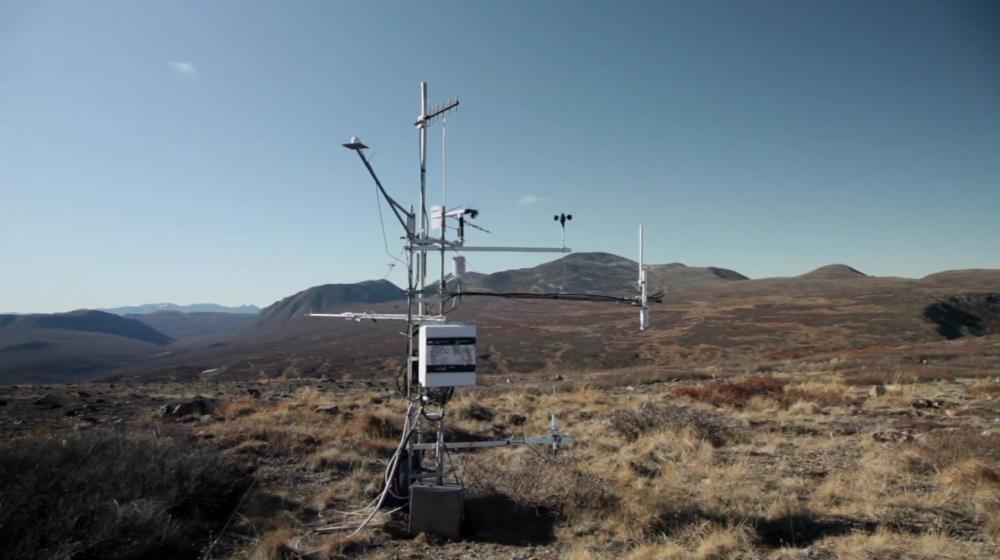
Related items loading ...
Section 1: Publication
Publication Type
Journal Article
Authorship
Rezanezhad, F.,
Title
Letter-to-the-Editor: Unfrozen water availability controls temperature-dependence of biogeochemical processes in frozen soils
Year
2025
Publication Outlet
Science Direct, Geoderma Volume 458, June 2025, 117307
DOI
ISBN
ISSN
Citation
Abstract
Over ∼75 % of the terrestrial land of the Northern hemisphere is subject to seasonal freezing and thawing and frozen soil processes are critical components of mass and energy balances in cold environments (Zhang et al., 2019). As the temperature of the soil decreases to below the equilibrium freezing temperature (usually less than 0 °C), solidification of soil water as polycrystalline ice begins, and ice and unfrozen liquid–water coexist in frozen soils. The composition of unfrozen water and ice vary with soil-atmosphere energy exchange, soil temperature dynamics (e.g., recurrent freezing and thawing), pressure, soil types (especially clay content), organic matter content, water content prior to soil freezing, and soil water solute concentrations. The unfrozen water content in frozen soil can be in the range of 2.5–20 % of the total soil mass, varying mostly with specific temperature and soil type (Stahli et al., 2004, Watanabe and Osada, 2017, Zhang et al., 2019). However, the difficulty to accurately measure unfrozen water content in both laboratory and field make the cumulative effects of changes in physical structure and heat transmission on the biogeochemical functioning of cold region soils complex.
Unfrozen water in frozen soils is either bound (on thin films within the electric double layer) or unbound (either as capillary in the soil matrix or gravitational in the pores outside the electric double layer). As the freezing progresses, thin films of unfrozen water remain on the surface of soil particles, as cohesive and adhesive forces depress the freezing point and keep this bound water unfrozen (Mohammed et al., 2018). Thus, the liquid water–ice phase transitions in frozen soils change the pore structure during the freezing process, causing the water flow and associated solute fluxes to be inherently more complex in comparison to non-frozen soils (Li et al., 2021).
The unfrozen water content in frozen mineral and organic soils is the most important prerequisite for microbial activity. The phase composition of moisture in frozen soil, i.e., the content of air-filled pores, unfrozen water and ice, is the major factor controlling microbial activity and is largely controlled by the osmotic and matric potential (Drotz et al., 2009, Öquist et al., 2009). The thickness of the unfrozen water films ultimately controls the microbial activity, as the diffusion of extracellular enzymes and substrates within the frozen soil is extremely slow (Davidson and Janssens, 2006). Within the depressed freezing temperature of the water films, microbes adjust membrane proteins to alter membrane fluidity and keep them intact, limiting the deleterious effect of lower temperatures. Although growth is slowed, the condition will not result in anabiosis (Rilfors and Lindblom, 2002, Rivkina et al., 2000). For this reason, the thickness of unfrozen water films relative to the size of the active microbial cells is the true prerequisite for any microbial activity while temperature itself still sensitively controls the order of magnitude of that activity (Öquist et al., 2009). Thus, the fraction of unfrozen water content in frozen soil allows winter soil microbial activities to persist and microorganisms only continue to function due to unfrozen water and will persist within the thin water films.
The physical and microbial metabolic processes in frozen soils further modulate the biotic and abiotic processes controlling biogeochemical cycling, in particular organic carbon mineralization (or heterotrophic soil respiration), nutrient turnover, and mineral weathering reactions (Matzner and Borken, 2008, Kurylyk et al., 2014, King et al., 2021). The freezing of the soil causes depletions in oxygen (O2) availability, which, in turn, affect soil microbial activity and the biogeochemical processes involved in organic matter decomposition, soil respiration, greenhouse gas (GHG) emissions, and nutrient cycling. The soil microbial activities have been reported at low temperatures in a variety of subsurface environments, including subarctic peatland permafrost (−16 °C; Panikov and Dedysh, (2000)) and arctic soils (−18 °C; Elberling and Brandt, (2003)), it is more likely that minimum temperatures sustaining microbial soil processes are variable and reflect the temperature regime of the given microbial habitats (Mangelsdorf et al., 2009, Panikov et al., 2006). Given some soil microbes can survive in extreme cold regions, with long periods of cold weather, such as the Arctic or Antarctic, due to adaptations that allow them to maintain their cellular functions in cold environments, they can be still active with observable evidence of persistent GHG emissions and catabolic and anabolic metabolisms at temperatures as low as −39 °C (Panikov et al., 2006).
Our current understanding of the microbial and biogeochemical functioning of frozen soils is less than other soil environments, because of difficulties in measuring and monitoring in cold regions’ soils. Even less is known about the relationship between unfrozen water content and temperature-dependence of soil biogeochemical processes involved in carbon and nitrogen mineralization, microbial respiration, and potential enzyme activities at sub-zero temperatures. Research should focus on characterizing the unfrozen water content and establish the temperature-dependencies of nutrient mineralization rates, and the interactive effects of temperature and unfrozen water content on microbially-mediated frozen soil GHG effluxes. A comprehensive understanding of partitioning between a temperature response and the effect of unfrozen water availability on soil biogeochemical activities at low temperatures is essential, not only for predicting the fate of the vulnerable nutrient’s stocks in cold regions’ terrestrial ecosystems, but also for accurate predictions of nutrients balances. Moreover, future climate uncertainties highlight the need to develop and couple cutting-edge experimental approaches to biogeochemical-hydrological models to unravel the various soil properties controlling biogeochemical functioning in cold regions’ soils under frozen and unfrozen conditions and their response to the changes in temperature and hydrology under climate warming.
Plain Language Summary


 GWFNet
GWFNet Master
Master Data
Data Research
Research Map
Map
 Advanced
Advanced Tools
Tools
 . . .
. . .
 Metadata Editor
Metadata Editor
 Record List
Record List
 Alias List Editor
Alias List Editor
 Legacy sites
Legacy sites